Hair Transplant Overharvesting: Causes and Prevention

Overharvesting hair transplant surgery can lead to lasting damage, leaving patients with visible thinning or patchy areas in the donor region that may never fully recover.
In this article, we’ll explore overharvesting, why it happens, and, most importantly, how to avoid it.
Protecting your donor area is crucial to achieving a successful, natural-looking hair transplant that lasts forever!
- What is overharvesting?
- Why does overharvesting happen?
- Where are you more likely to get a bad hair transplant?
- How to avoid damage to the donor area
- Shock loss or overharvesting?
What is overharvesting?
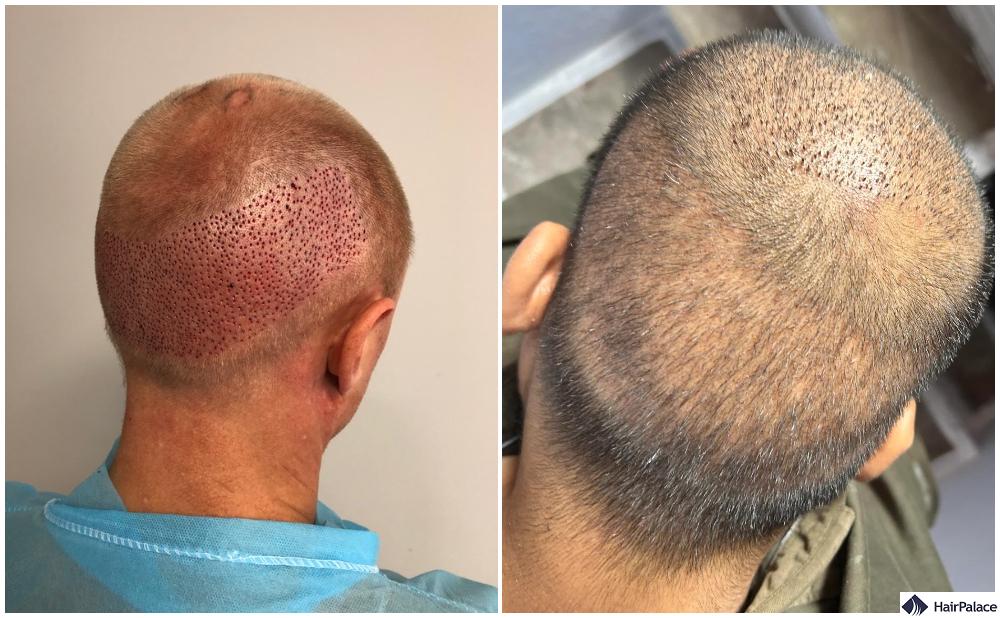
Overharvesting refers to extracting too many hair follicles in a hair transplant procedure, which can lead to visible thinning or scarring in that region.
This often happens when too many grafts are removed to achieve high density in the transplanted area, especially if the patient has limited donor hair available.
- Limitations for Future Transplants: Overharvesting reduces the number of available grafts for any future hair transplants, limiting options if further hair loss occurs.
- Visible Thinning in Donor Area: Overharvesting can result in an unnatural, patchy look in the donor area, as the remaining hair may not adequately cover the extraction sites.
- Scar Formation: In some cases, the donor area may develop noticeable scars or “dotting” patterns that are difficult to conceal, especially in short hairstyles.
FUE overharvesting
While FUE is minimally invasive and leaves only tiny, dot-like scars, excessive extraction can lead to noticeable thinning, patchiness, or scarring in the donor area, particularly if the patient has limited donor hair.
FUE overharvesting often results from an attempt to achieve high hair density in the hair transplantation area or due to poor planning in managing the available donor hair.
This risk increases if the patient has advanced hair loss and limited donor supply, as more follicles are required to cover large areas of thinning.
Why does overharvesting happen?
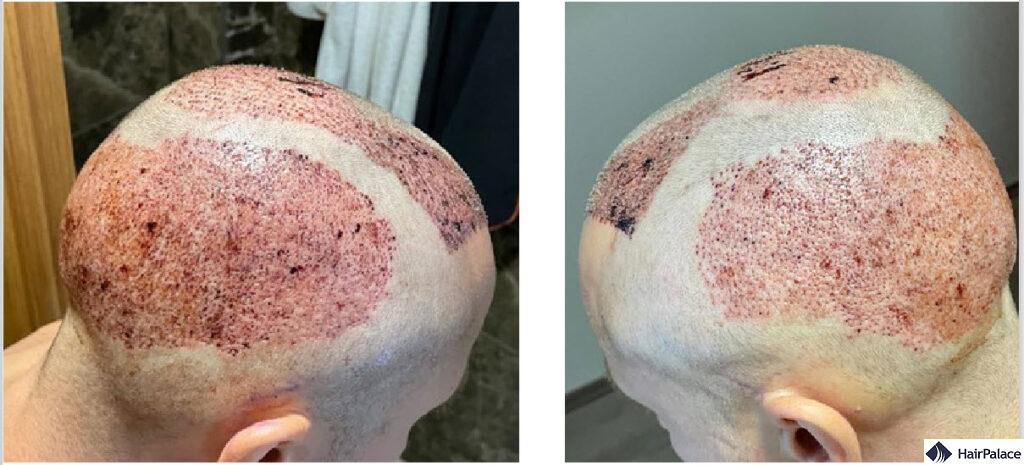
Overharvesting in hair transplants, particularly with FUE (Follicular Unit Extraction), happens for several reasons. However, it is most often linked to planning, technique, and patient expectations.
Here are the primary causes:
1. Excessive Graft Extraction
When too many grafts are taken, the donor area can appear patchy and thin.
This is more common in patients with extensive hair loss, where the donor area has to cover a larger surface, creating a high demand for grafts that the donor area cannot sustainably support.
2. Limited Donor Supply
Patients with advanced hair loss or thinning often have limited donor hair available, so even a moderate extraction can lead to visible thinning.
If the donor area is sparse, taking too many grafts from a small section amplifies the risk.
The result is visible patchiness or scalp exposure in the donor area that can be difficult to conceal, particularly in short hairstyles.
3. Inadequate Surgical Planning
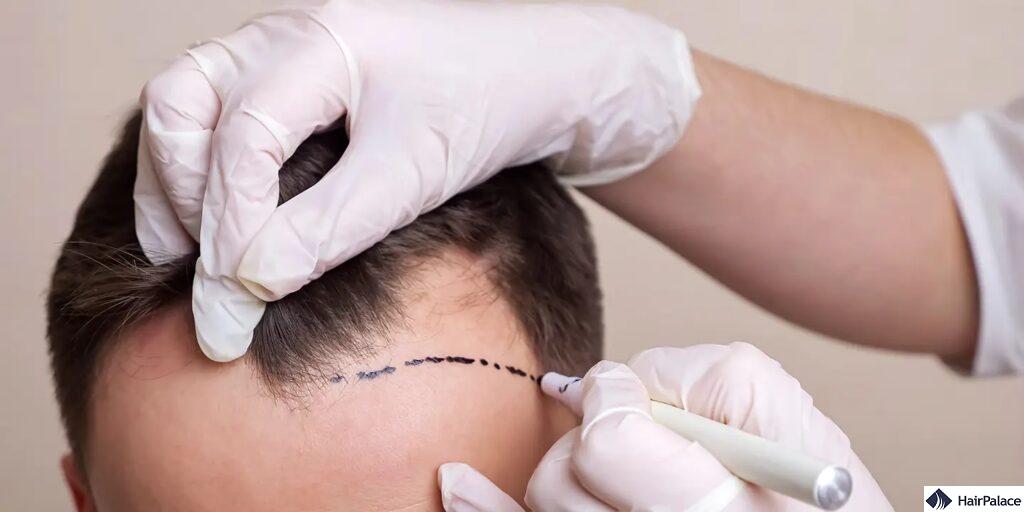
Overharvesting can occur if the surgeon does not thoroughly assess the long-term needs and characteristics of the patient’s hair loss.
Inexperienced surgeons may fail to distribute extractions evenly across the donor area, resulting in noticeable thinning.
Proper extraction planning is essential to avoid removing too many grafts from any one area.
A skilled surgeon will aim for balance, taking into account the possibility of future procedures.
4. Lack of Consideration for Future Hair Loss
Overharvesting can occur if the surgeon doesn’t account for progressive hair loss, particularly if the patient will need further transplants.
Without reserving enough donor hair, future transplants become challenging, leaving limited options.
Over time, the patient may experience more hair loss, creating gaps that cannot be filled if the donor area is already overharvested.
5. High Patient Expectations for Instant Density
Some patients desire a dramatic improvement in hair density in one procedure. This demand for immediate results can pressure surgeons to harvest more grafts than the donor area can sustainably provide.
Meeting these high-density expectations without carefully planning extraction leads to overharvesting, resulting in donor thinning that can worsen over time.
Where are you more likely to get a bad hair transplant?
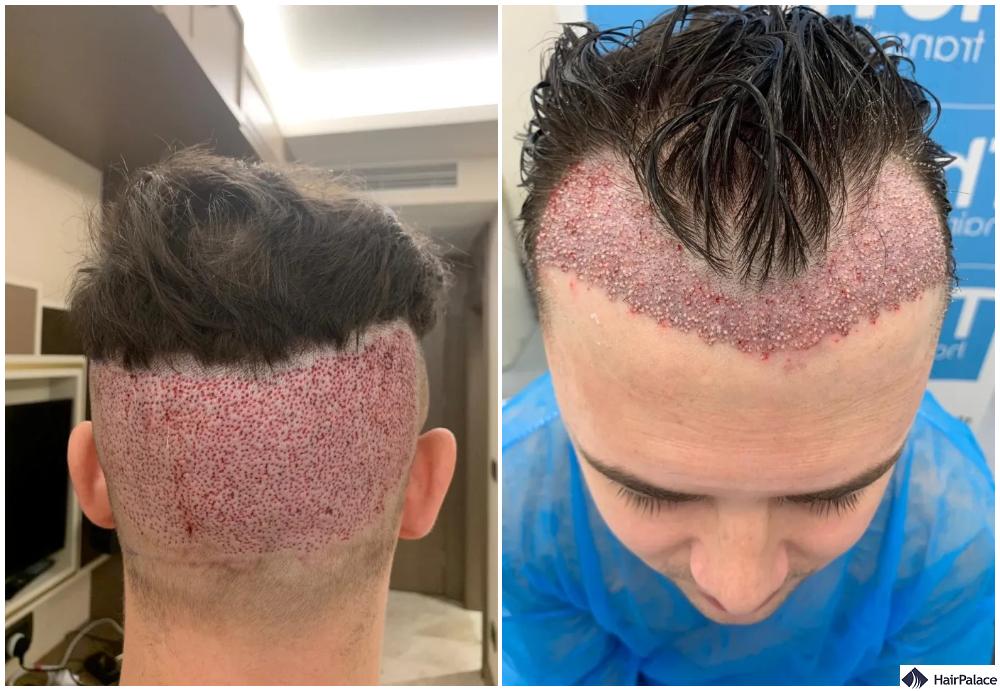
Many patients are drawn to Turkish clinics by clever marketing tactics and suspiciously cheap hair transplant packages.
These clinics often extract as many as 4,000 to 5,000 hair grafts to achieve results that could be accomplished with half the follicles.
Such “mega sessions” frequently deplete the donor area, leaving patients with no options for correction if the transplant fails.
Turkish clinics offer these excessive graft numbers knowing they likely won’t face the consequences.
After the procedure, the patient returns home, often realizing the damage only a year later.
These clinics are primarily profit-driven, often with little regard for the long-term outcome of their work.
How to avoid damage to the donor area

Avoiding damage to the donor area and preventing overharvesting during a hair transplant requires careful planning and clear communication.
1. Careful Assessment
The surgeon should thoroughly evaluate the density, elasticity, and quality of the hair transplant donor area. Only then can he determine how many grafts can be safely extracted.
Knowing the limitations of the donor area ensures that extractions are done within safe limits, reducing the risk of visible thinning or scarring.
2. Choose an Experienced Surgeon
Select a surgeon with a strong background who understands the importance of minimal, evenly-spaced extractions.
An Experienced hair transplant surgeon is skilled in techniques that minimize trauma to the donor area, ensuring that grafts are harvested evenly.
3. Proper equipment
Surgeons can use smaller, high-precision micro-punch tools to extract follicles.
Smaller punches cause less tissue trauma and result in tiny scars that are less noticeable, even if the hair is cut short.
This also helps preserve the surrounding follicular units for future hair transplant procedures.
4. Limit the Number of Grafts per Session
For patients requiring a high number of grafts, it’s often better to schedule multiple sessions.
This way there’s no need to extract too many in a single procedure.
Spacing out sessions gives the donor area time to recover, preventing excessive thinning or scarring and allowing for a more natural look in both the donor and recipient areas.
5. Avoid Mega Sessions
Surgeons should avoid “mega sessions” (extracting too many grafts in one sitting) during a single procedure if the donor area cannot support it.
A more moderate graft density reduces the need for overharvesting and achieves a natural result that can be built upon.
6. Realistic Expectations
Surgeons should have honest discussions with patients about achievable density levels and the potential need for future sessions.
Setting realistic expectations reduces pressure to overharvest in a single session, preserving the donor area and achieving natural-looking results over time.
7. Post-op Care for Donor Area
Follow post-procedure care instructions, including using mild cleansers, avoiding direct sun exposure, and taking any prescribed medications to prevent infection or inflammation.
Proper aftercare supports optimal healing and reduces the risk of complications in the donor area.
At HairPalace, we adhere to these guidelines, and our clinic does not operate as an assembly line.
Each of our doctors performs only one hair transplant per day, dedicating their full attention to a single patient.
Additionally, we work with experienced surgeons who have years of experience in the field of hair transplantation.
Book a free no-obligation consultation today and find out how HairPalace can transform your life!
Shock loss or overharvesting?
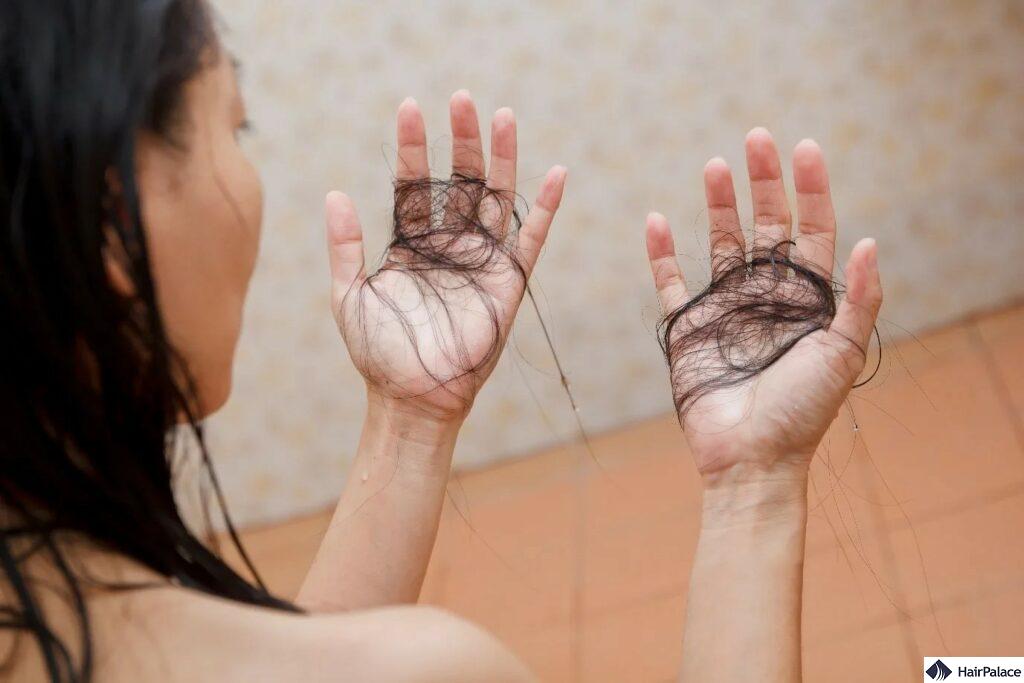
Shock loss and overharvesting are both conditions that can lead to visible thinning in the donor or recipient area.
Both can hinder hair growth and lead to thinning hair after a successful hair transplant surgery, but there are some key differences to be aware of.
Shock loss
Shock loss is a temporary shedding of hair that occurs in response to trauma from the hair transplant surgery itself. It can happen in both the donor and recipient areas.
It occurs due to the physical trauma or stress of surgery, which can disrupt the hair follicles and put them into a temporary shedding phase (telogen effluvium).
Shock loss usually affects existing, non-transplanted hair around the transplanted area. This shedding can make the area look thinner, as some native hairs fall out in response to the procedure.
Thankfully the condition is only temporary and the lost hair typically regrows over several months.
To minimize shock loss, experienced surgeons use gentle techniques and advise patients on optimal aftercare to reduce trauma to existing hair follicles.
Overharvesting
Overharvesting is the excessive removal of healthy hair follicles from the donor area, resulting in permanent thinning or visible scarring in that region.
It occurs when a hair transplant clinic extracts too many hair follicles from the donor area.
This leaves the harvested donor area with visible gaps, additional hair shedding, or even scarring due to insufficient remaining hair.
Unlike shock loss, which temporarily affects non-transplanted hairs, overharvesting causes a permanent loss of density in the donor area.
This can create visible patchiness, thinning, or dot-like scars, particularly if the patient wears short hairstyles.
Just like male pattern baldness, overharvesting results in permanent thinning in the donor area because the follicles do not regenerate once removed.
Overharvesting is more likely to happen with an inexperienced surgeon or when too many grafts are extracted in one session.
Prevention requires careful planning, realistic density goals, and even distribution of extractions across the donor area to preserve its natural density and appearance.
Last medically reviewed on July 30th, 2025
- ISHRS: 2025 Practice Census Resultshttps://ishrs.org/wp-content/uploads/2025/05/report-2025-ishrs-practice-census_05-12-25-final.pdf
- Mang, Werner L, et al. Hair Transplantation.Manual of Aesthetic Surgery 2010: 519-540.https://doi.org/10.1007/978-3-540-78795-2_12
- Nadimi S. Complications with Hair Transplantation. Facial Plast Surg Clin North Am. 2020 May;28(2):225-235. doi: 10.1016/j.fsc.2020.01.003. PMID: 32312509.https://pubmed.ncbi.nlm.nih.gov/32312509/
- Asfour L, Cranwell W, Sinclair R. Male Androgenetic Alopecia. 2023 Jan 25. In: Feingold KR, Anawalt B, Blackman MR, Boyce A, Chrousos G, Corpas E, de Herder WW, Dhatariya K, Dungan K, Hofland J, Kalra S, Kaltsas G, Kapoor N, Koch C, Kopp P, Korbonits M, Kovacs CS, Kuohung W, Laferrère B, Levy M, McGee EA, McLachlan R, New M, Purnell J, Sahay R, Singer F, Sperling MA, Stratakis CA, Trence DL, Wilson DP, editors. Endotext [Internet]. South Dartmouth (MA): MDText.com, Inc.; 2000–. PMID: 25905192.https://pubmed.ncbi.nlm.nih.gov/25905192/
- Garg AK, Garg S. Complications of Hair Transplant Procedures-Causes and Management. Indian J Plast Surg. 2021 Dec 31;54(4):477-482. doi: 10.1055/s-0041-1739255. PMID: 34984088; PMCID: PMC8719980.https://pubmed.ncbi.nlm.nih.gov/34984088/


